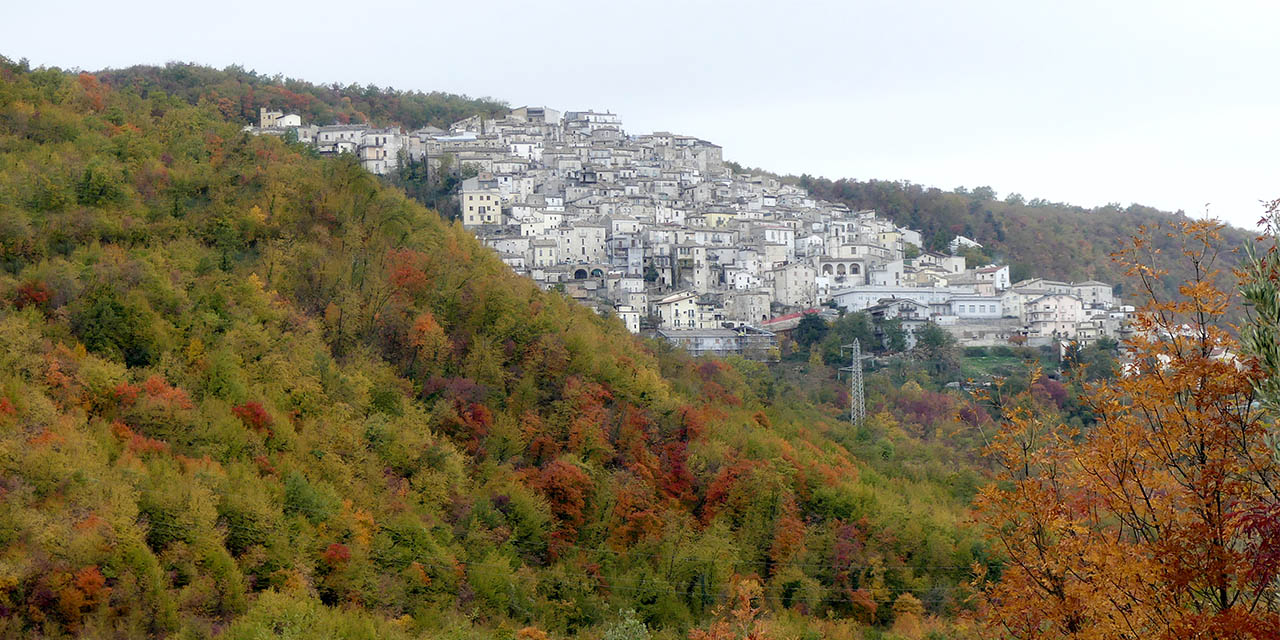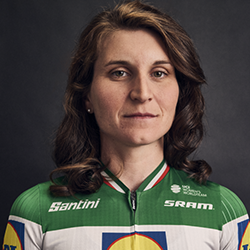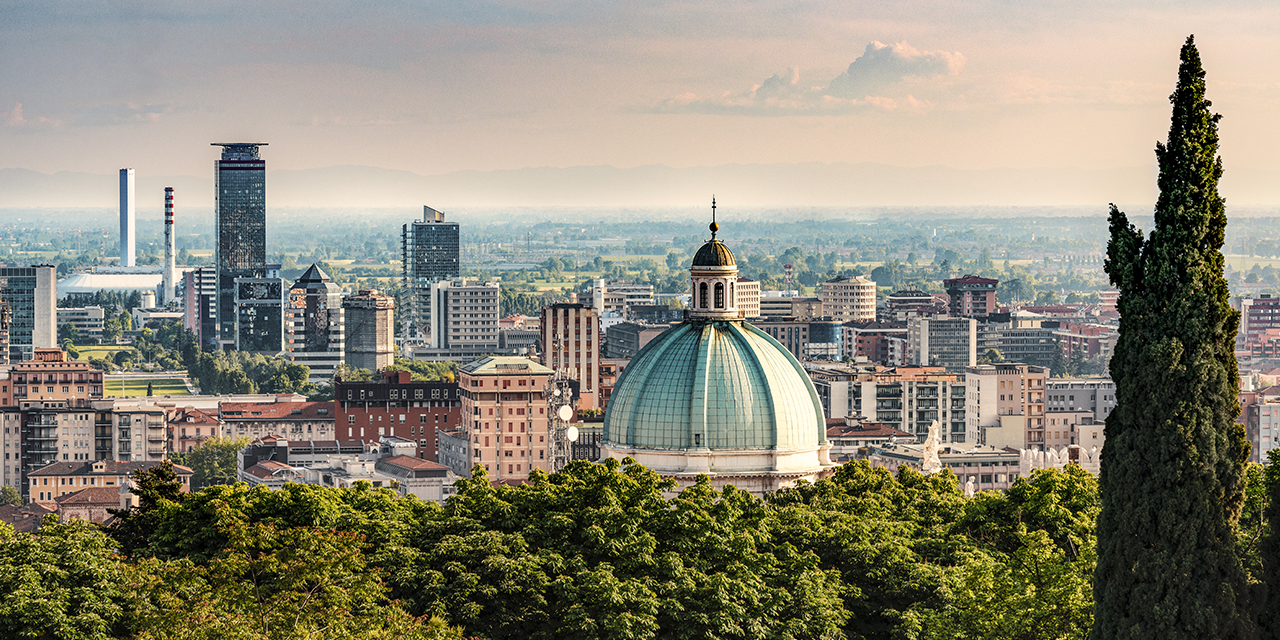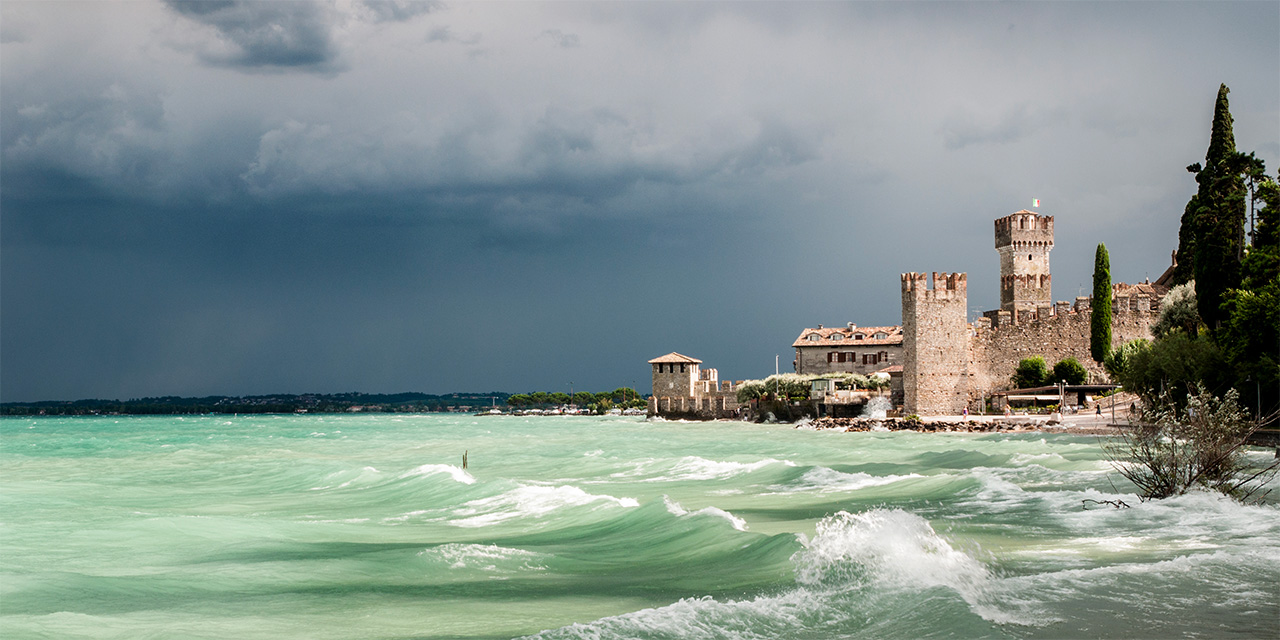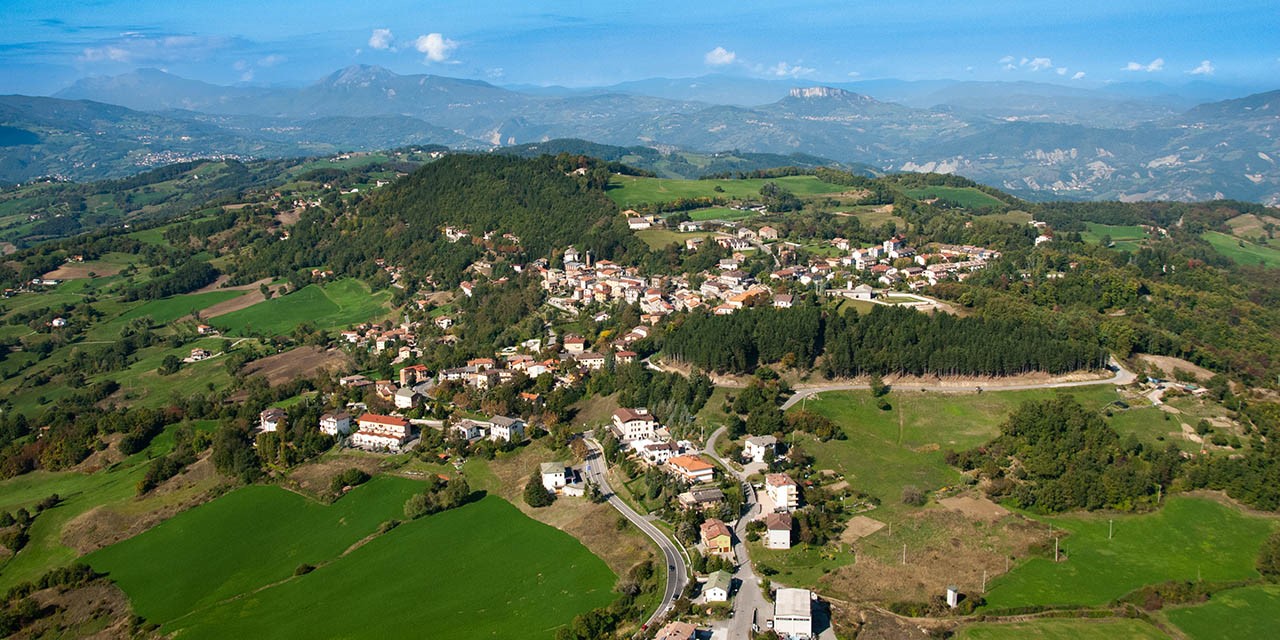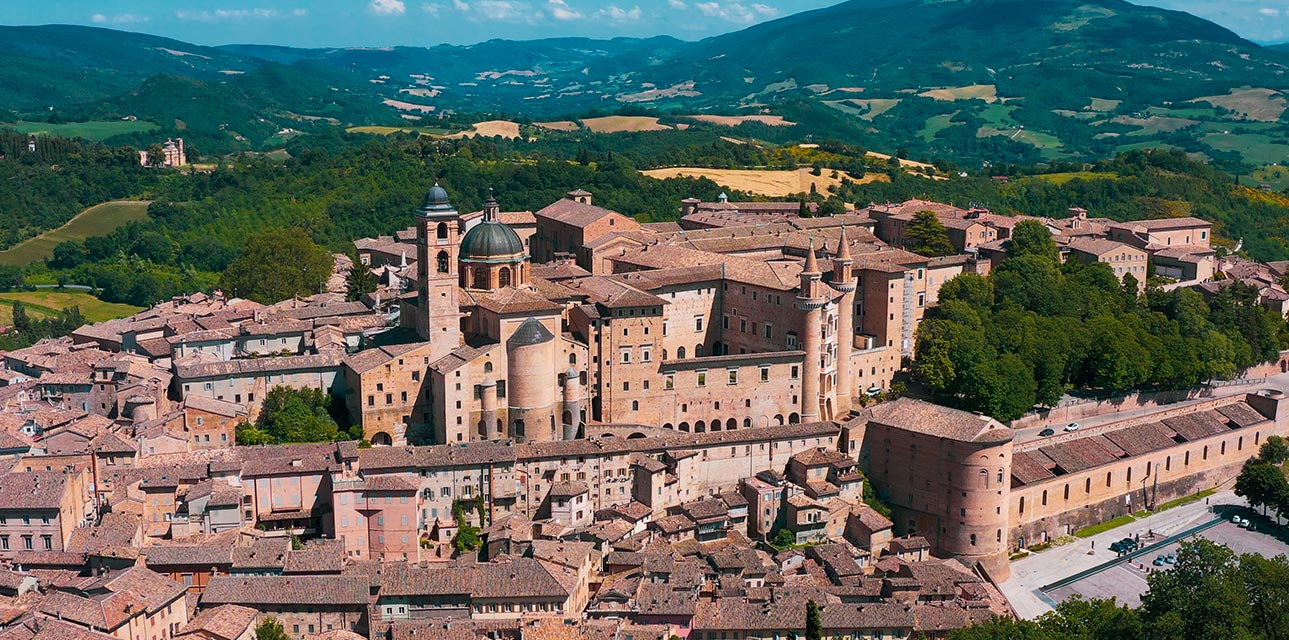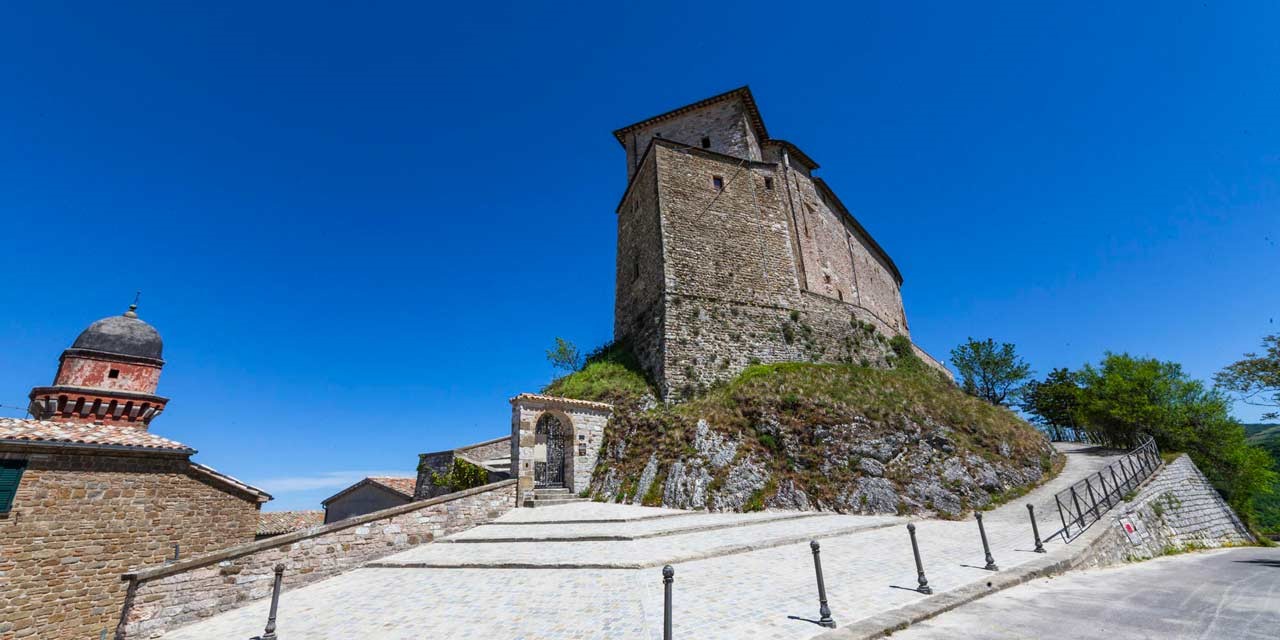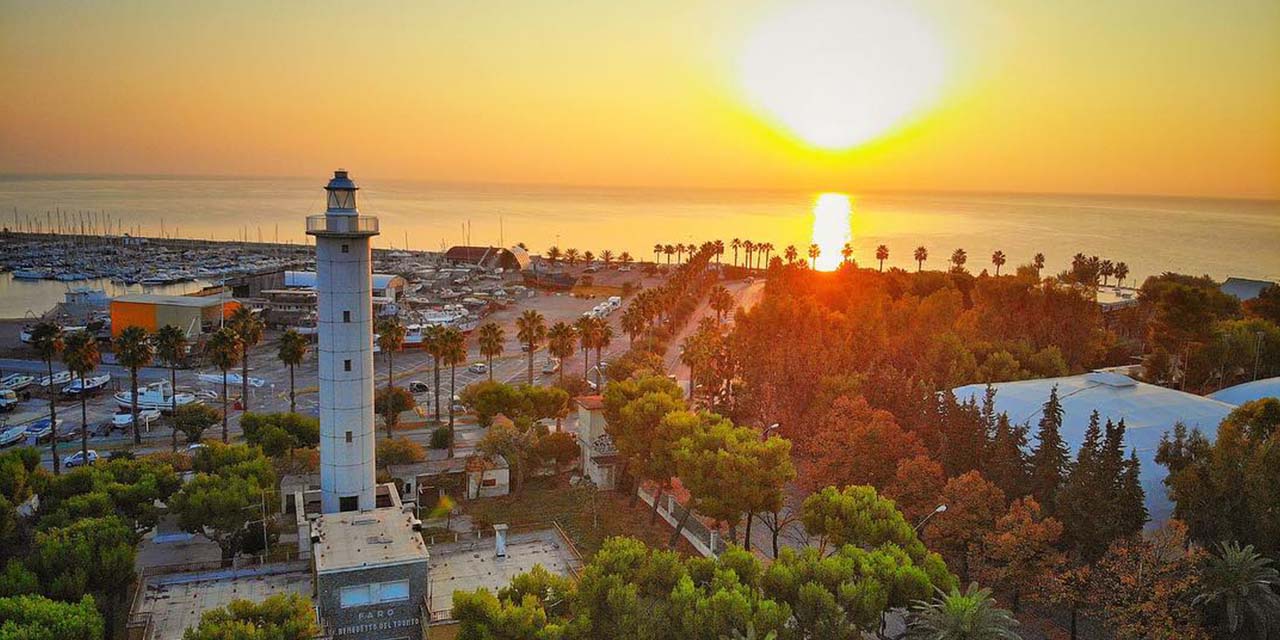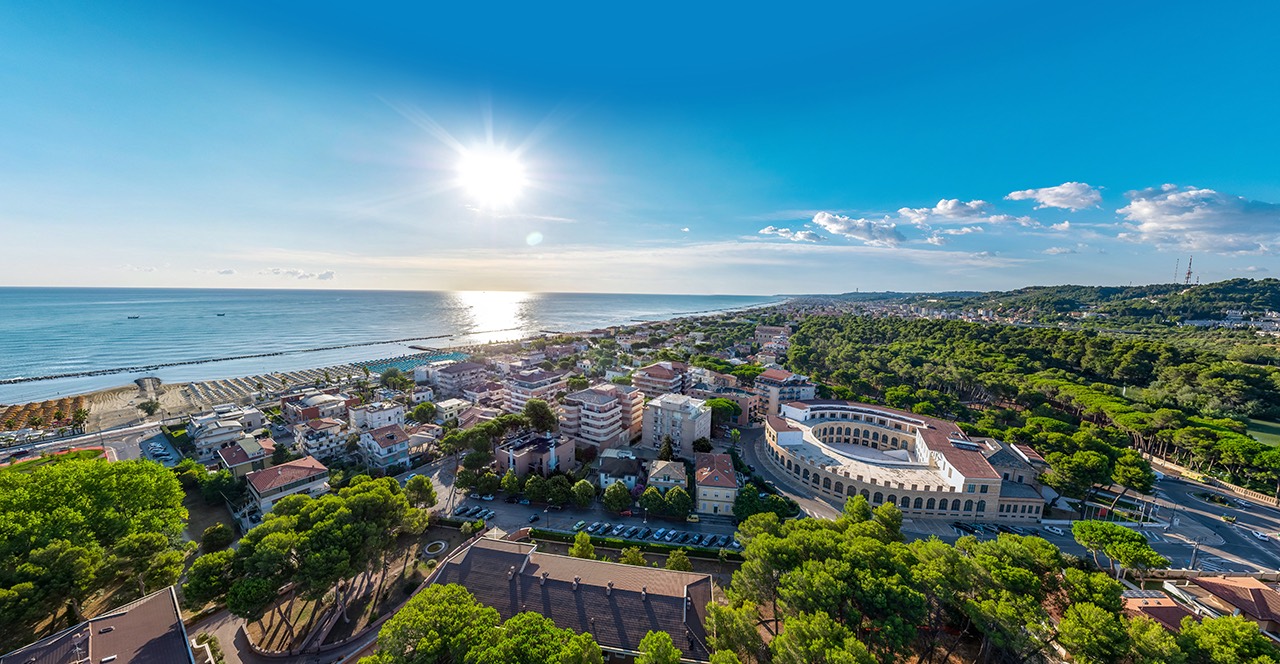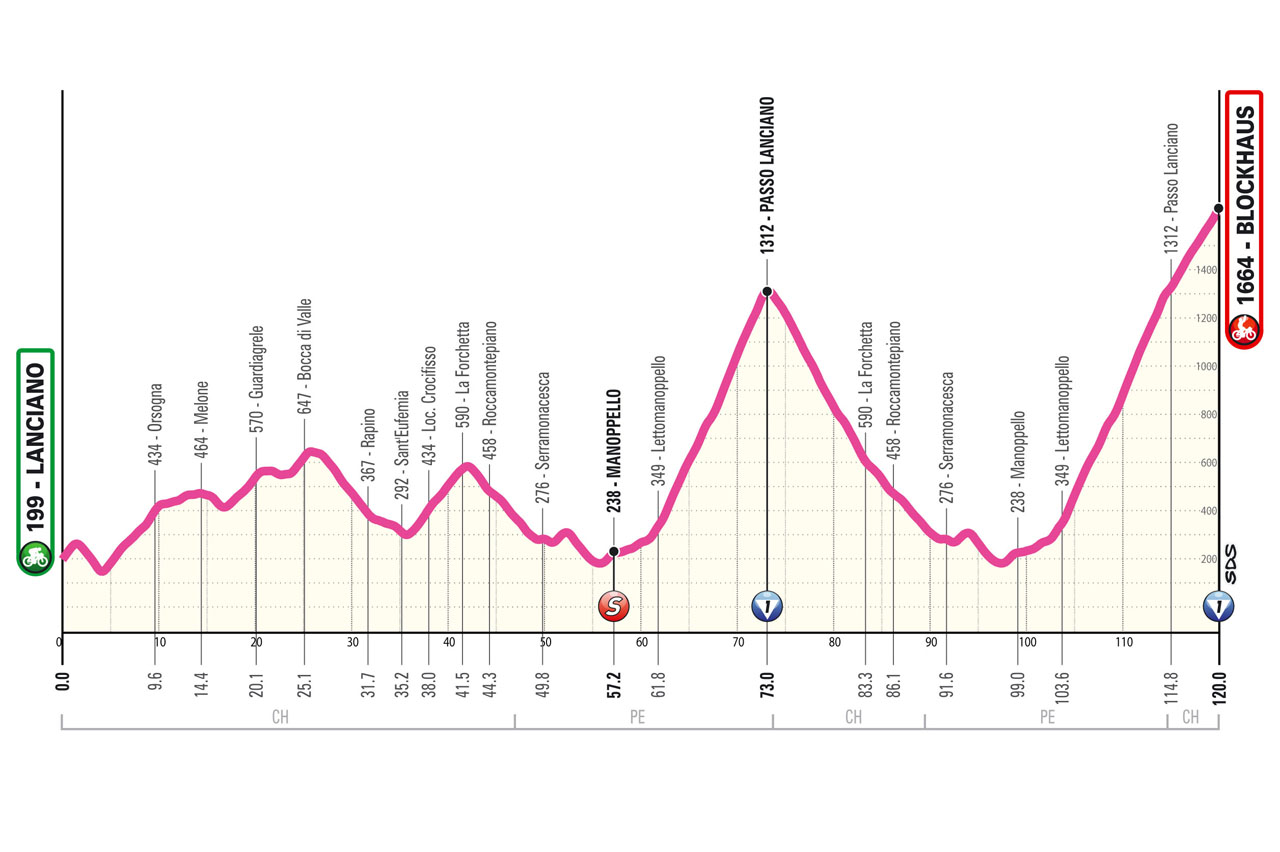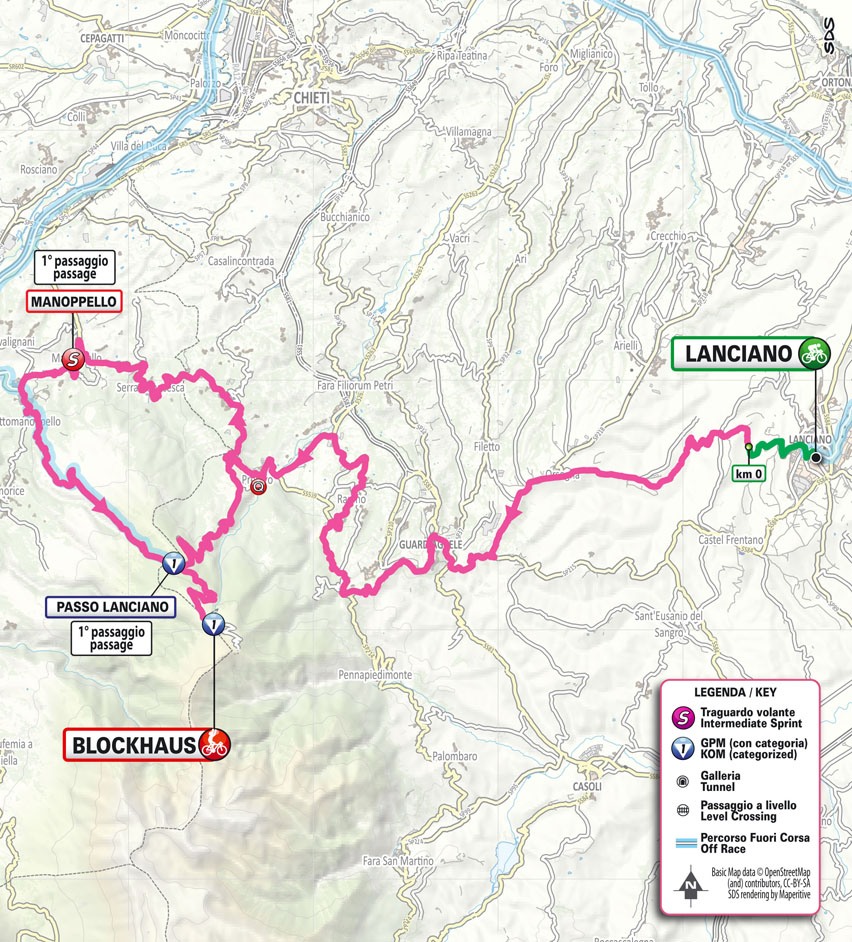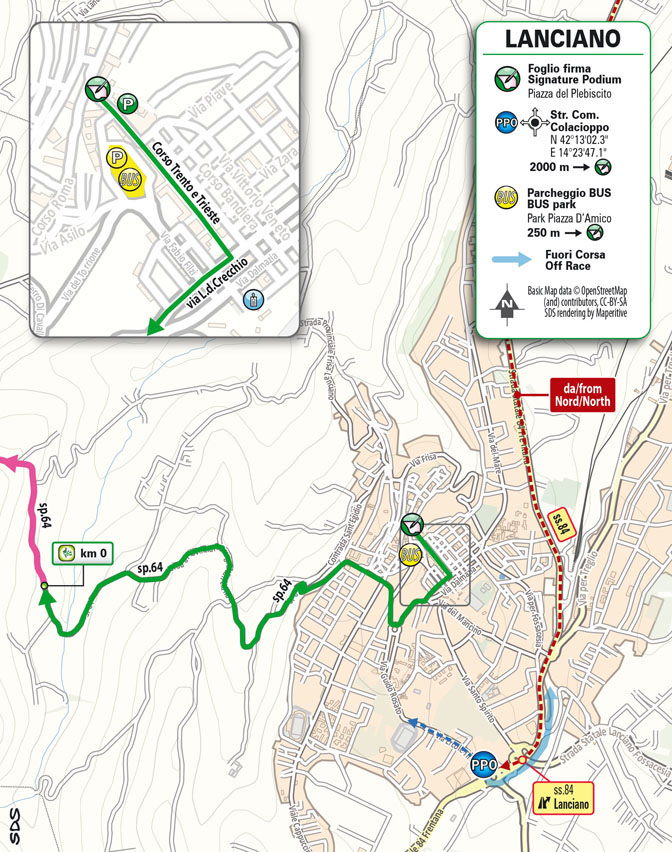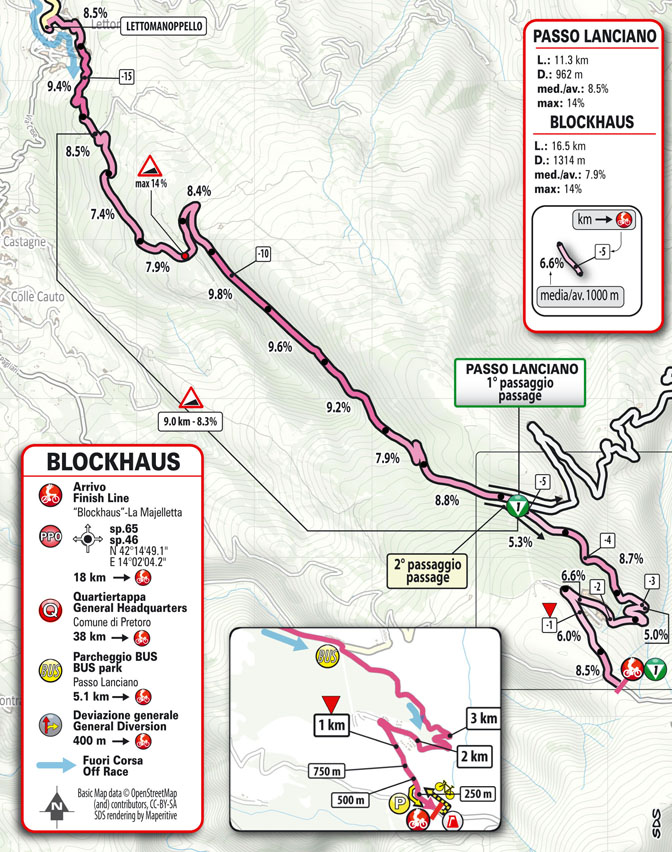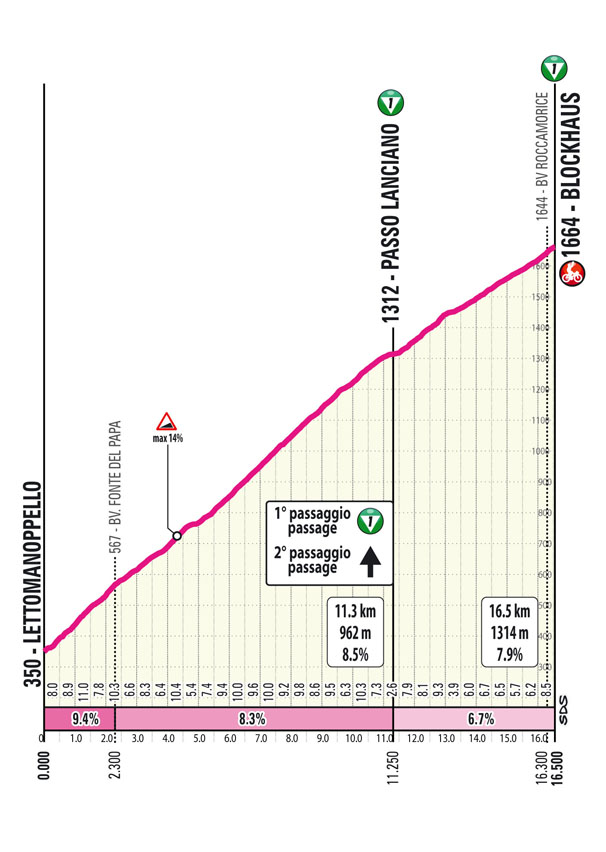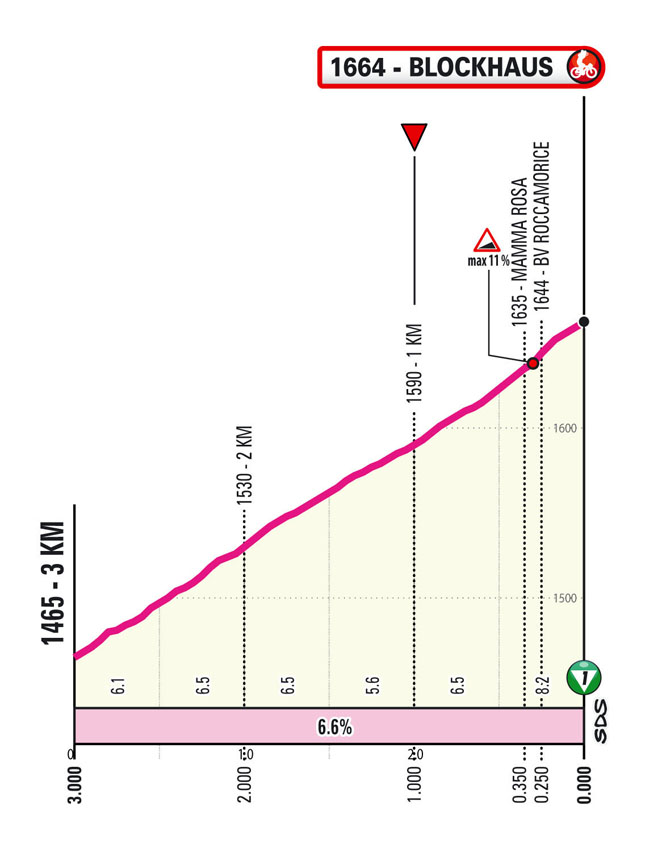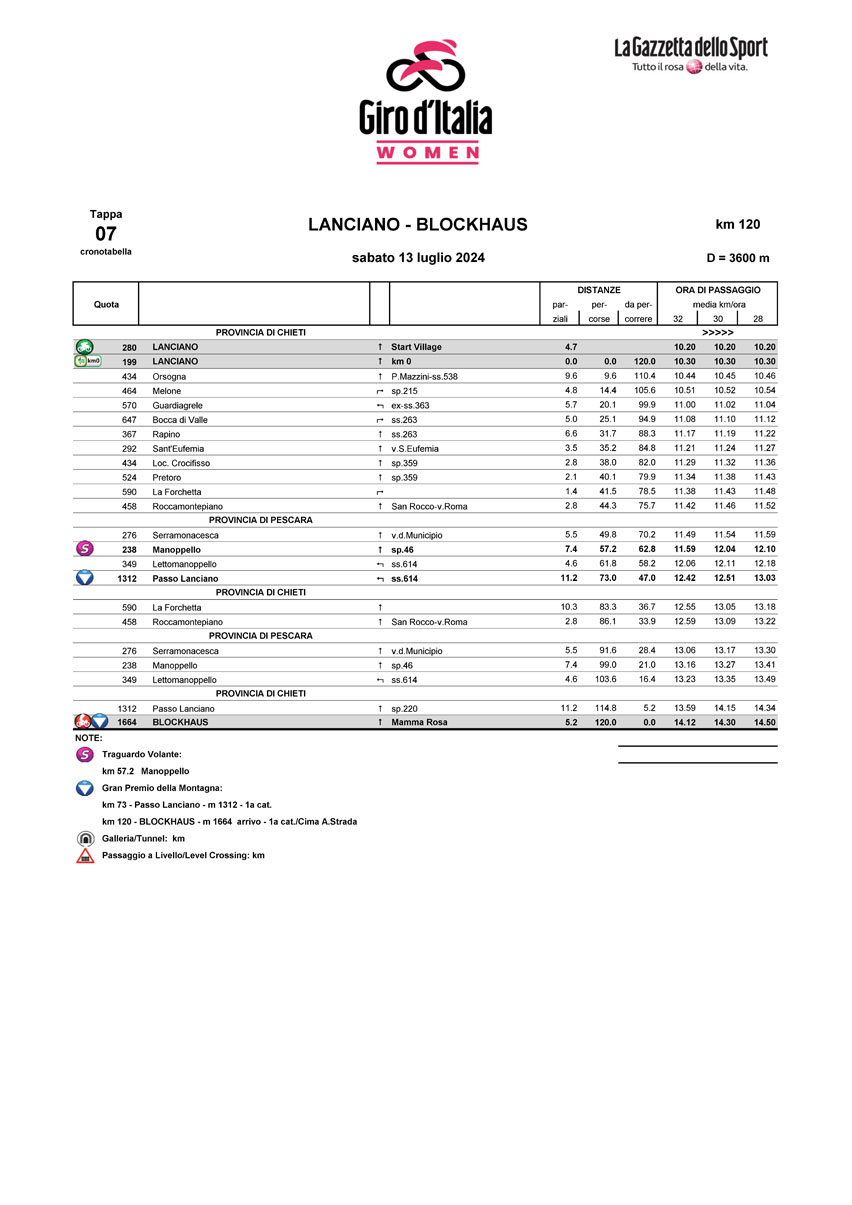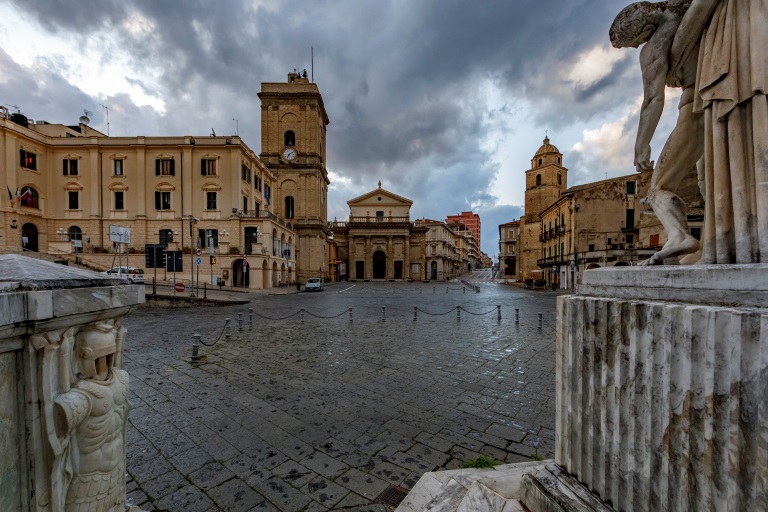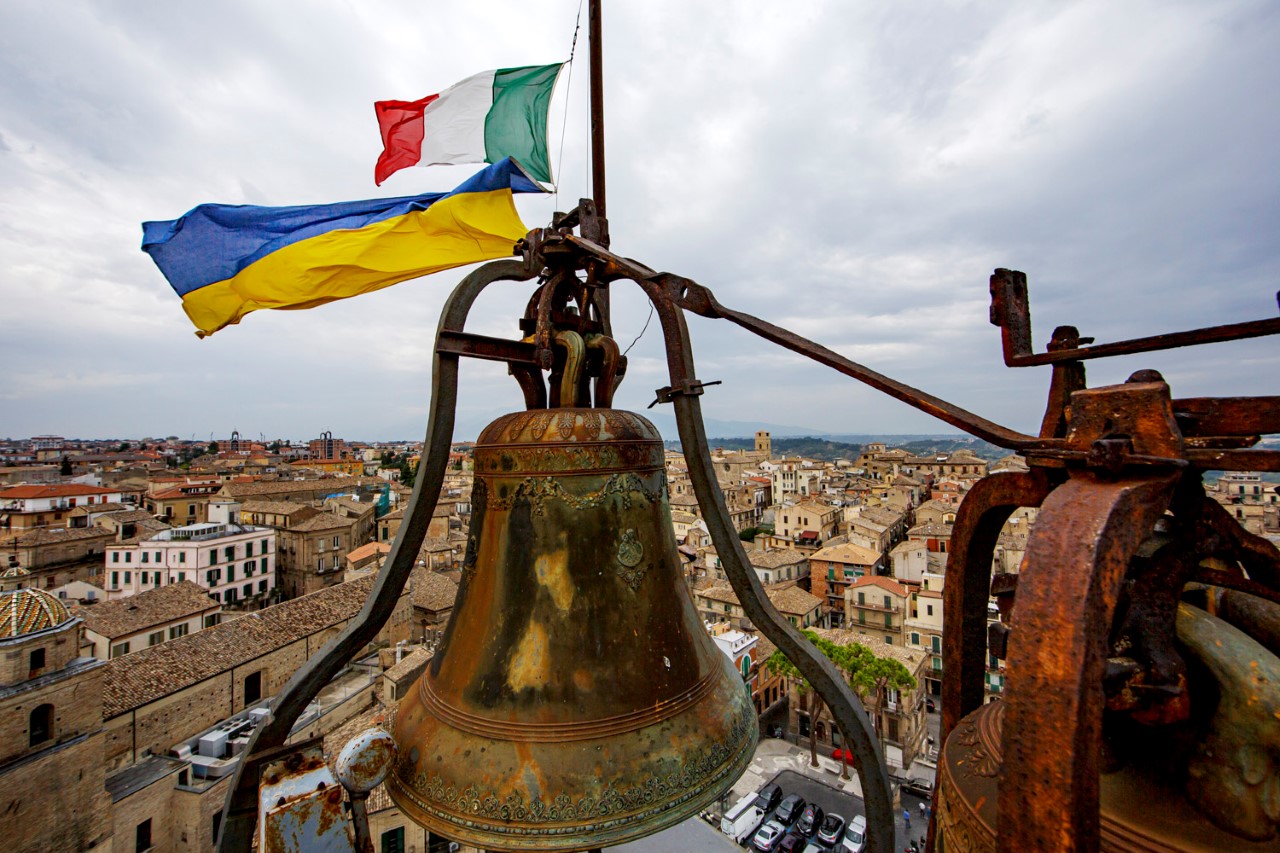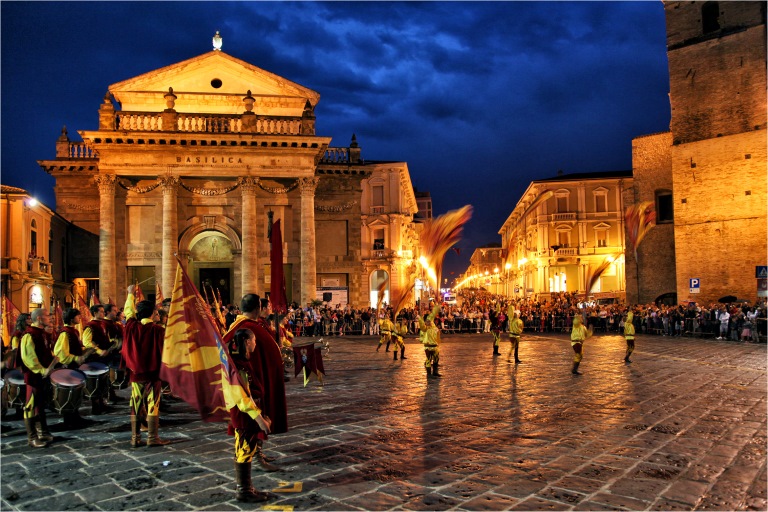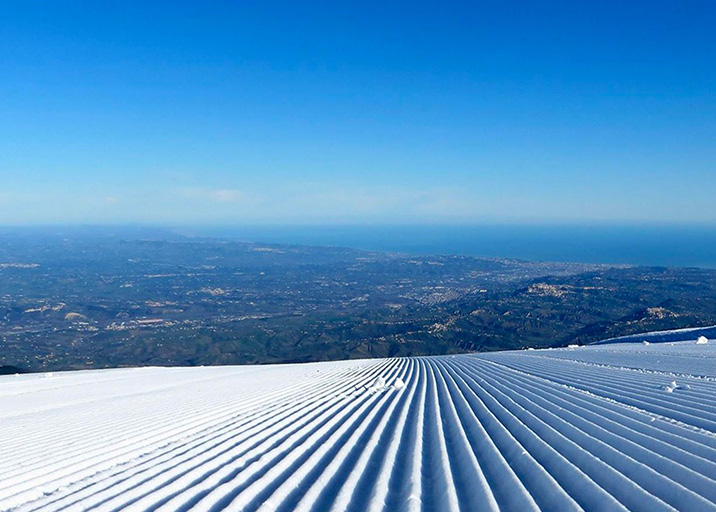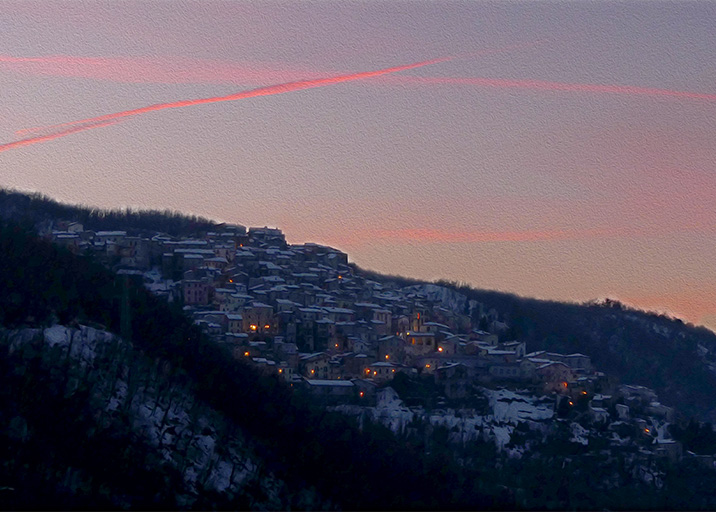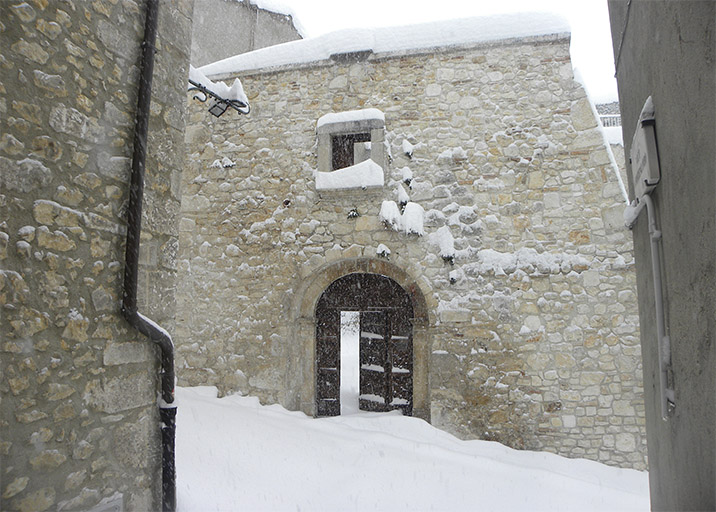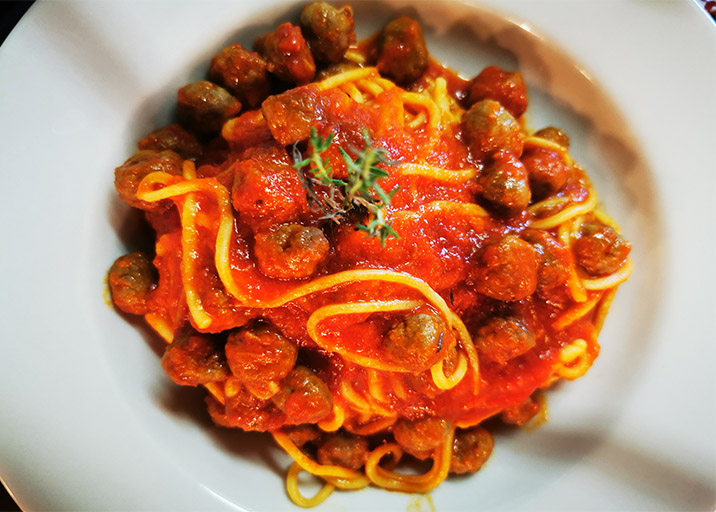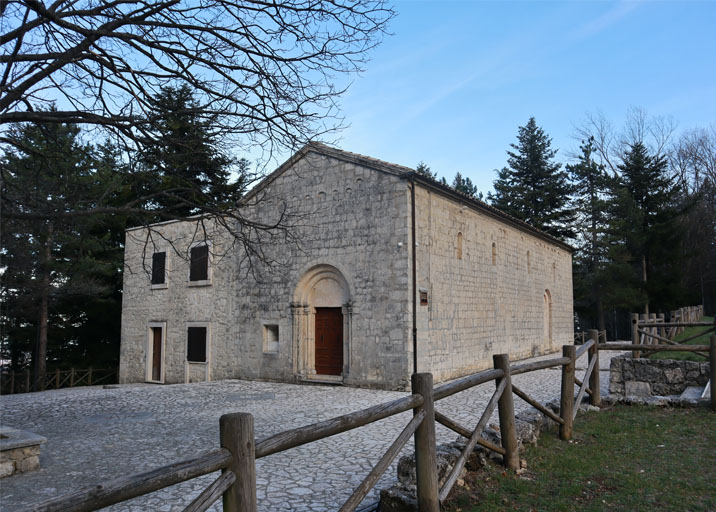profile
map
technical info
More than likely the Queen Stage of this Giro. Basically, a breathless succession of short punchy climbs through the opening 60km, ending with the double climb of the Passo Lanciano, which on the second passage continues to the Blockhaus (Mamma Rosa). The riders will climb Bocca di Valle after Guardiagrele and La Forchetta after Pretoro before tackling the terrible final circuit. The first climb from Lettomanoppello ends at the Lanciano Pass to descend to La Forchetta and, back to Lettomanoppello, the girls will climb to the Lanciano Pass completing the climb to the finish at Blockhaus. The roads are very demanding, with several bends and numerous ups and downs, especially in the first part.
Last kilometres
The last 16 km are all uphill and feature long straight stretches interspersed with hairpin bends. For almost 13 km the gradient remains above 8/9 % with peaks of up to 12%. In the last 5 km the gradient settles at around 7%. Final straight is on asphalt, length 200 m, width 6 m.
start / finish
climb detail
final kilometres
itinerary timetable
tourist info
Host city:
Lanciano
Overview
Traveling along the A14, Lanciano is a must stop for the attentive visitor. Turning at the “Lanciano” motorway exit and following the signs for the center for about 6 km, you arrive, along Corso Trento e Trieste, at Piazza Plebiscito, the ideal starting point for visiting the historic center of the city.
Piazza Plebiscito, the ancient and modern heart of the city, is particularly evocative: the austere church of S. Francesco, the cathedral of the Madonna del Ponte, with its neoclassical façade, the mighty civic tower from the 1600s and the war memorial .
The interior of the Cathedral is worth a careful visit, with the paintings by Diano, an 18th century Neapolitan painter, and the terracotta statue of the Madonna (1400). It is possible to get an idea of the complex system of bridges on which the cathedral stands by visiting the Diocletian auditorium from which the underground archaeological corridor departs which connects the Diocletian bridge with the convent of S. Francesco.
From Piazza Plebiscito you can access the Lancianovecchia, Borgo, Sacca and Civitanova districts.
Points of Interest
Lancianovecchia
Via dei Frentani leads to the oldest district of the city: Lancianovecchia. Walking alongside the nineteenth-century Teatro Fenaroli, named after the famous composer from Lanciano, you arrive at the tower of S. Giovanni or della Candelora. The only remaining part of the 14th century church, destroyed by an earthquake. A little further on you can admire the church of S. Agostino, whose Gothic style façade belongs to the school of Petrini, the most famous artist of Lanciano working in 1300. Continuing, in the church of Santa Croce the 2nd Eucharistic miracle is kept: ” The host transformed into bloody flesh”, which occurred in 1273. Going forward you come across an example of a medieval house-shop, which dates back to 1434. A little further on you arrive at the church of S. Biagio which is the oldest building in Lanciano (it dates back to year one thousand). Every year, on February 3, the rite of anointing the throat with blessed oil is celebrated, as San Biagio is the protector of throat ailments. Finally, at the end of the street, you can see Porta San Biagio (11th century), the only survivor of the nine gates that opened along the walls of the ancient city.
Village
Again starting from Piazza Plebiscito, walking along Corso Roma, you enter the Borgo district, where you can admire in succession: The church of S. Francesco which contains, within a precious Neapolitan reliquary from 1713, the first Eucharistic Miracle remembered by the Catholic Church, which occurred in the 8th century, when the conversion of the Host into flesh and the wine into blood, clotted into 5 globules, occurred; and the church of S. Lucia, built in 1300 on the remains of the temple of Juno Lucina, with its valuable rose window. On the eastern side of the Borgo district you can see the Aragonese tower from the 1400s, together with the remains of the medieval walls. The 16th century source of the Borgo is interesting, an example of civic service from the past.
Civitanova
Once the visit of the Borgo is completed, you can get to the Sacca district, from Piazza Plebiscito itself, going down the stairs that lead to Piazza Garibaldi and going up the so-called “Cento Gradoni”. Walking along Via Cavour you come across Palazzo Stella, home to the Archaeological Museum. At the end of the same street you can see the church of S. Nicola, in which some frescoes from the 1300s and 1400s were accidentally found, which narrate the legend of S. Croce. Adjacent to the church of San Nicola we find the church of S. Rocco.
Going up Via Garibaldi you enter the Civitanova district, which in addition to being embellished with sixteenth and eighteenth century buildings, the presence of characteristic alleys that open in a herringbone pattern, is enriched by the splendid church of Santa Maria Maggiore. It is certainly the most original building of the Middle Ages in Abruzzo. It was rebuilt in the 13th century on the remains of a pre-existing church. Its grandiose Gothic style façade features a rich portal, the work of Francesco Petrini. A precious processional cross in silver and enamel, the work of Nicola da Guardiagrele, is preserved in the church.
Continuing along via Garibaldi, you arrive at Largo dell’Appello, on the southern side of the ancient village of Civitanova, where you can admire the sixteenth-century church of S. Giovina and a still well-preserved stretch of the ancient city walls with the two mountain towers , so called because they defended the city from the side of the mountains.
Museums
Lanciano is a town full of museums to visit: Of great interest are the Civic Archaeological Museum and the Historical Archive (Via Cavour, 13, Palazzo Stella); the Archaeological Route (Piazza Plebiscito, from the Diocletian Bridge to the Sanctuary of the Eucharistic Miracle, the Diocesan Museum (Largo dell ‘Appello, 2).
Blockhaus
Overview
Among the peaks of the Majella mountain massif, in the heart of the Abruzzo Apennines, there is one that has a rather intriguing name: Monte Blockhaus. With German origins, it means “blockhouse” and refers to a military fortification.
In the area, you can in fact find the remains of an outpost built by German soldiers in the second half of the 19th century, to defend against marauders. Evidence of the presence of raiders in the area can also be found along the dirt path that leads to the so-called Tavola dei Briganti, a series of rocks carved by shepherds and farmers, determined opponents of Habsburg unification in Abruzzo.
At the summit of Monte Blockhaus, 2,145 metres above sea level, you can admire breath-taking views, encompassing the Gran Sasso, the pristine nature of the Majella Park and even the Adriatic Sea.


